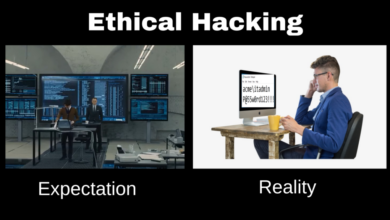
Account Takeover Risks During Pandemic Small Business Solutions
Account takeover risks during pandemic solutions for small businesses – it sounds scary, right? The pandemic dramatically shifted how we work and shop, making small businesses incredibly vulnerable to cyberattacks. Suddenly, everyone was working remotely, online transactions skyrocketed, and opportunistic hackers saw a golden opportunity. This post dives into the specific threats small businesses faced, explores their vulnerabilities, and most importantly, Artikels practical solutions to protect your business from becoming the next victim.
We’ll cover everything from strengthening your password policies and implementing multi-factor authentication to understanding the importance of employee training and leveraging affordable security software. We’ll also explore how to create a recovery plan in case the worst happens, because let’s face it, even the best security measures can sometimes fail. Get ready to beef up your business’s defenses and navigate the digital world with confidence!
Increased Account Takeover Risks During the Pandemic
The COVID-19 pandemic dramatically shifted the way businesses operated, forcing a rapid transition to remote work and increased reliance on digital tools. This shift, while necessary for survival, inadvertently created a breeding ground for cybercriminals looking to exploit vulnerabilities in small businesses’ security infrastructure. The sudden and widespread adoption of new technologies, coupled with a generally heightened sense of urgency, left many small businesses unprepared for the surge in account takeover attempts.The vulnerabilities exploited during this period were numerous and significant.
The sudden shift to remote work meant that many employees were accessing company systems and sensitive data from unsecured home networks, increasing the risk of malware infections and data breaches. Simultaneously, the dramatic increase in online transactions, as physical stores closed and consumers shifted to e-commerce, created more opportunities for cybercriminals to intercept sensitive financial information. This perfect storm of factors led to a significant increase in the success rate of account takeover attempts.
Phishing and Malware Attacks Targeting Remote Employees
The pandemic saw a sharp rise in phishing scams and malware attacks specifically targeting employees working remotely. These attacks often leveraged the anxieties and uncertainties surrounding the pandemic to trick employees into clicking malicious links or downloading infected files. Phishing emails often mimicked legitimate communications from government agencies, healthcare providers, or even the employees’ own companies, making them difficult to distinguish from genuine messages.
Malware attacks, meanwhile, often targeted vulnerabilities in remote access software or exploited weaknesses in home network security. The consequences of these attacks ranged from data breaches and financial losses to complete system shutdowns, severely impacting small businesses’ operations and reputations.
Account takeovers skyrocketed during the pandemic, hitting small businesses hard. Strengthening security is crucial, and a key part of that involves modernizing your systems. This is where exploring options like domino app dev the low code and pro code future comes in; it offers faster, more efficient development of robust security features, ultimately helping small businesses better protect themselves from these threats.
Examples of Successful Account Takeover Attempts
The following table illustrates a few examples of successful account takeover attempts targeting small businesses during the pandemic. While specific details are often kept confidential for security reasons, these examples highlight the diverse methods used and the significant financial impact these attacks can have. Note that the financial losses listed represent reported figures and may not reflect the full extent of the damage.
| Date | Business Type | Method of Attack | Financial Loss |
|---|---|---|---|
| March 2020 | Online Bookstore | Phishing email leading to malware infection | $15,000 |
| June 2020 | Restaurant (online ordering system) | Credential stuffing attack | $8,000 |
| October 2020 | Dental Practice | Ransomware attack via compromised remote access software | $20,000 (ransom paid) + $5,000 (data recovery) |
| December 2020 | Clothing Boutique (e-commerce) | Compromised payment gateway | Undisclosed (significant customer data breach) |
Vulnerabilities of Small Businesses

Small businesses, the backbone of many economies, often find themselves disproportionately vulnerable to account takeovers. This vulnerability stems from a combination of factors, including limited resources, a lack of specialized expertise, and a less robust security culture compared to larger corporations. Understanding these weaknesses is crucial for developing effective mitigation strategies.The reality is that many small businesses operate with significantly fewer resources dedicated to cybersecurity than their larger counterparts.
This translates to a higher likelihood of security gaps and a greater susceptibility to attacks. A lack of dedicated IT staff, outdated software, and insufficient investment in security solutions all contribute to this increased risk.
Lack of Robust Security Measures and Resources
Small businesses often lack the budget and expertise to implement comprehensive security measures. This can manifest in several ways: outdated operating systems and software, weak or easily guessable passwords, a lack of multi-factor authentication (MFA), and insufficient network security, such as firewalls and intrusion detection systems. For example, a small bakery might rely on a single, easily-compromised password for all its online accounts, including banking and customer databases.
The cost of implementing robust security solutions can seem prohibitive, leading many to prioritize immediate operational needs over long-term security investments. This lack of investment directly increases their vulnerability to account takeovers.
Inadequate Employee Training on Security Awareness
Even with the best security technology in place, human error remains a significant vulnerability. Inadequate employee training on cybersecurity best practices leaves small businesses susceptible to phishing scams, malware infections, and social engineering attacks. A poorly trained employee might inadvertently click on a malicious link in a phishing email, granting attackers access to sensitive company information and accounts.
The lack of regular security awareness training, coupled with insufficient emphasis on password hygiene and safe internet practices, significantly weakens a small business’s overall security posture.
Comparison of Security Postures: Small Businesses vs. Large Corporations
The differences in security postures between small businesses and large corporations are stark. Large corporations typically have dedicated IT security teams, comprehensive security policies, and significant investments in security infrastructure and personnel. They often employ advanced security technologies like intrusion detection systems, security information and event management (SIEM) systems, and penetration testing to proactively identify and mitigate vulnerabilities. In contrast, small businesses often rely on a single individual or a small team to handle all IT-related tasks, leaving them with limited time and resources to focus on security.
This disparity in resources and expertise directly contributes to the higher susceptibility of small businesses to account takeovers and other cyber threats. A simple comparison could involve contrasting a large bank’s multi-layered security system with a small cafe’s reliance on a single password-protected computer for all its operations.
Solutions for Preventing Account Takeovers

Account takeovers are a serious threat to small businesses, potentially leading to financial losses, reputational damage, and legal repercussions. A multi-layered security approach is crucial for mitigating these risks, combining various strategies to create a robust defense against attackers. This approach goes beyond simply relying on strong passwords and incorporates proactive measures to identify and respond to potential threats.Implementing robust security protocols requires a comprehensive strategy, combining technological solutions with employee training and awareness.
This isn’t a one-time fix; it’s an ongoing process of evaluation and adaptation to the ever-evolving threat landscape. Think of it like building a fortress – multiple layers of defense are far more effective than a single, easily breached wall.
Multi-Layered Security Approach
A multi-layered security approach involves combining several security measures to create a robust defense. This includes strong passwords and multi-factor authentication, regular security audits, employee training, and the use of security software. Each layer adds an additional hurdle for attackers, making it significantly harder for them to gain unauthorized access. For example, even if an attacker manages to bypass a password, they will still be blocked by MFA.
This layered approach minimizes the impact of any single security breach.
Password Management and Multi-Factor Authentication (MFA)
Strong password management is fundamental. This means using unique, complex passwords for each account, avoiding easily guessable information like birthdays or pet names. Password managers can help generate and securely store these complex passwords. Equally crucial is the implementation of multi-factor authentication (MFA). MFA adds an extra layer of security by requiring users to verify their identity using a second factor, such as a code sent to their phone or a biometric scan.
This significantly reduces the risk of unauthorized access, even if an attacker obtains a password. For instance, even if a hacker gets your password through phishing, they won’t be able to access your account without the second authentication factor from your phone.
Implementing Robust Security Protocols: A Step-by-Step Guide
Implementing robust security protocols is a systematic process. First, conduct a thorough security assessment to identify vulnerabilities. Next, establish clear security policies and procedures, including password management guidelines and MFA requirements. Then, implement the chosen security technologies, such as firewalls, intrusion detection systems, and security information and event management (SIEM) tools. Regularly update and patch software to address known vulnerabilities.
Finally, provide ongoing employee training on security best practices and phishing awareness. This step-by-step approach ensures a comprehensive and effective security system.
Essential Security Measures Checklist
Before implementing any security measure, it is important to assess the specific needs and vulnerabilities of your business. This checklist provides a starting point for building a robust security posture.
- Strong and Unique Passwords: Enforce the use of strong, unique passwords for all accounts and encourage the use of password managers.
- Multi-Factor Authentication (MFA): Enable MFA for all critical accounts, including email, banking, and cloud services.
- Regular Software Updates: Implement a system for regularly updating all software and applications to patch security vulnerabilities.
- Firewall Protection: Use a firewall to protect your network from unauthorized access.
- Antivirus and Antimalware Software: Install and maintain up-to-date antivirus and antimalware software on all devices.
- Employee Security Training: Provide regular training to employees on security best practices, including phishing awareness and password management.
- Data Backup and Recovery: Regularly back up your data to a secure location and test your recovery procedures.
- Security Audits: Conduct regular security audits to identify and address vulnerabilities.
- Incident Response Plan: Develop and test an incident response plan to handle security breaches effectively.
- Monitor Account Activity: Regularly monitor account activity for suspicious login attempts or unusual behavior.
Employee Training and Awareness
Protecting your small business from account takeovers requires more than just robust security software; it demands a well-trained and vigilant workforce. Employees are often the weakest link in the security chain, inadvertently falling victim to phishing scams or neglecting crucial security protocols. A comprehensive employee training program is therefore crucial for bolstering your overall cybersecurity posture. This involves educating employees on recognizing and avoiding threats, and reinforcing best practices for safe online behavior.A proactive approach to employee training is significantly more effective than reactive measures taken after a breach.
Regular, engaging training sessions help cultivate a security-conscious culture within your company, minimizing the risk of successful account takeovers and protecting sensitive business data. This translates to reduced financial losses, improved operational efficiency, and enhanced brand reputation.
Phishing Recognition Techniques
Phishing emails are a common vector for account takeovers. Training should equip employees with the skills to identify and report suspicious emails. This includes recognizing common red flags such as poor grammar, urgent requests for personal information, unfamiliar sender addresses, and unexpected attachments. Employees should be instructed to never click on links or open attachments from unknown senders.
Furthermore, they should be encouraged to verify the authenticity of emails by contacting the purported sender directly through known channels, rather than replying to the suspicious email itself. Simulations, where employees receive mock phishing emails, can effectively test their knowledge and highlight areas needing improvement. Regularly updated examples of real-world phishing attempts should be included in the training materials to keep employees current with the latest tactics used by cybercriminals.
Safe Internet Practices
Safe internet practices encompass a wide range of behaviors that minimize the risk of account compromise. Training should cover the importance of strong, unique passwords for each online account. Password managers can be introduced as a tool to simplify password management without compromising security. Employees should understand the risks associated with using public Wi-Fi networks and the importance of using a VPN when accessing sensitive information remotely.
They should also be trained on the dangers of clicking on suspicious links, downloading files from untrusted sources, and using unsecured websites for sensitive transactions. The training should emphasize the importance of regularly updating software and employing multi-factor authentication wherever possible. Real-world examples of data breaches caused by neglecting these practices can be used to reinforce the importance of adhering to security protocols.
Conducting Effective Security Awareness Training Sessions
Effective training sessions require careful planning and execution. Sessions should be interactive and engaging, avoiding lengthy lectures. The use of short videos, quizzes, and interactive scenarios can significantly improve knowledge retention. Regular, short training sessions are more effective than infrequent, lengthy ones. Consider incorporating gamification elements, such as points or badges, to incentivize participation and engagement.
Post-training assessments can measure employee understanding and identify areas requiring further attention. Feedback mechanisms should be incorporated to allow employees to express concerns and ask questions. The training should be tailored to the specific roles and responsibilities of employees, focusing on the types of threats they are most likely to encounter. For example, employees with access to financial information would require more in-depth training on secure financial practices.
Modular Training Materials
Organizing training materials into easily digestible modules allows for flexibility and targeted learning. Each module should focus on a specific aspect of cybersecurity, such as phishing recognition, password management, or safe internet practices. Modules can be delivered online or in person, depending on the resources and preferences of the small business. Interactive elements, such as quizzes and simulations, can be incorporated into each module to enhance engagement and knowledge retention.
Short videos explaining key concepts can make the learning process more enjoyable and effective. Regular updates to the training modules are crucial to address evolving threats and best practices. Consider using a learning management system (LMS) to track employee progress and ensure everyone completes the training. A clear, concise, and visually appealing design will make the modules more accessible and engaging for employees.
Technology Solutions and Tools
Account takeovers are a serious threat, especially for small businesses often lacking extensive IT resources. Fortunately, affordable and effective technology solutions can significantly bolster your security posture. By strategically implementing the right tools, you can create a layered defense against malicious actors and protect your valuable business data and customer information.The cornerstone of a robust security strategy lies in leveraging a combination of security software and tools designed to detect and prevent unauthorized access.
These tools act as your first line of defense, continuously monitoring your systems and alerting you to suspicious activity. Choosing the right combination depends on your specific needs and budget, but a multi-layered approach is generally recommended for optimal protection.
Antivirus and Anti-malware Software
Effective antivirus and anti-malware software are essential for preventing infections that can lead to account takeovers. These programs scan your systems for known malware and viruses, blocking malicious code before it can execute. Many affordable options are available, including free versions with sufficient capabilities for small businesses with limited budgets. Features to look for include real-time protection, automatic updates, and scheduled scans.
Examples include the free versions of AVG AntiVirus or Avast, or paid options such as Bitdefender or Malwarebytes, each offering different levels of protection and features. Regular updates are crucial to ensure the software remains effective against the latest threats.
Intrusion Detection and Prevention Systems (IDPS)
For more comprehensive protection, consider implementing an Intrusion Detection and Prevention System (IDPS). These systems monitor network traffic for suspicious activity, such as unauthorized login attempts or unusual data transfers. They can detect attacks that traditional antivirus software might miss, providing an extra layer of security. While dedicated IDPS solutions can be expensive, many managed service providers offer affordable cloud-based options tailored to small businesses.
These services typically include monitoring, alerting, and incident response capabilities, minimizing the need for in-house expertise. The key benefit is proactive threat detection, allowing for quicker responses to security breaches.
Multi-Factor Authentication (MFA)
While not strictly software, MFA is a crucial technology solution. MFA adds an extra layer of security beyond passwords, requiring users to provide multiple forms of authentication before accessing accounts. This could involve a one-time code sent to a mobile device, a biometric scan, or a security token. Enabling MFA on all critical accounts, including email, cloud storage, and business applications, is a simple yet highly effective measure to prevent unauthorized access, even if passwords are compromised.
Most online services now offer MFA as a built-in feature, making implementation straightforward.
Password Managers
Small businesses often struggle with managing numerous passwords across various platforms. Password managers help alleviate this challenge by securely storing and managing passwords, promoting the use of strong, unique passwords for each account. These tools can generate complex passwords and automatically fill them in, improving security and reducing the risk of password reuse. Many password managers offer affordable plans suitable for small businesses, providing centralized password management and additional security features like password monitoring and breach alerts.
Integrating Security Tools into a Comprehensive Strategy
Effectively integrating these tools requires a well-defined security strategy. This involves establishing clear security policies, regularly updating software, educating employees about security threats, and implementing robust incident response procedures. Regular security assessments and penetration testing can also identify vulnerabilities and improve the overall security posture. A layered approach, combining multiple security tools and practices, provides the strongest protection against account takeovers.
It’s about creating a robust defense system where even if one layer fails, others are in place to mitigate the risk.
Recovery and Response Plan
A successful account takeover can be devastating for a small business, potentially leading to financial losses, reputational damage, and legal repercussions. Therefore, having a comprehensive recovery and response plan is not just advisable, it’s crucial. This plan should Artikel clear steps to take in the event of a compromise, minimizing the impact and ensuring a swift return to normal operations.The speed and effectiveness of your response directly correlates with the extent of the damage.
A well-defined plan allows for a coordinated and efficient reaction, preventing the situation from escalating. This involves immediate action to contain the breach, restore access, and mitigate any further harm.
Incident Response Team
A designated incident response team should be established beforehand. This team should include individuals from different departments, such as IT, finance, and customer service, each with specific roles and responsibilities. Clear communication channels and escalation procedures must be defined to ensure a rapid and coordinated response. For instance, the IT team might be responsible for isolating the compromised account, while the finance team focuses on reviewing transactions for unauthorized activity.
Regular drills and simulations will ensure the team is prepared and functions efficiently under pressure.
Steps to Contain the Damage
The first step involves immediately isolating the compromised account to prevent further unauthorized access or data breaches. This might involve changing passwords, disabling access, and temporarily suspending online services. Next, a thorough investigation should be launched to determine the extent of the breach, identifying what data has been accessed and how the takeover occurred. This analysis will inform subsequent steps in the recovery process.
Finally, contacting relevant authorities, such as law enforcement or data protection agencies, may be necessary, depending on the severity of the breach and applicable regulations.
Restoring Access to Compromised Accounts
Restoring access involves a series of steps designed to regain control of the compromised account securely. This includes resetting passwords, updating security protocols, and verifying the integrity of the system. Multi-factor authentication (MFA) should be implemented or strengthened to prevent future takeovers. Any affected software or applications should be updated to the latest versions to patch any known vulnerabilities.
A detailed log of all actions taken during the restoration process should be maintained for auditing and future reference.
Data Backup and Recovery Plan
A robust data backup and recovery plan is paramount. Regular backups should be performed, stored securely offsite, and tested regularly to ensure they are functional and readily accessible in case of a data loss event. This plan should detail the procedures for restoring data from backups, minimizing downtime and data loss. The frequency of backups should be determined based on the criticality of the data and the acceptable level of data loss.
For example, a business with constantly changing data might require hourly backups, while another might find daily backups sufficient.
Recovery Process Flowchart
The following describes a flowchart illustrating the recovery process. Imagine a visual representation with boxes connected by arrows.* Box 1: Account Takeover Detected: This is the starting point, triggered by any indication of unauthorized access.
Box 2
Immediate Isolation: Isolate the compromised account to prevent further damage.
Box 3
Incident Response Team Activation: The designated team is notified and begins its work.
Box 4
Damage Assessment: Determine the extent of the breach and data compromised.
Box 5
Data Recovery from Backup: Restore data from the most recent reliable backup.
Box 6
Security Enhancement: Implement stronger security measures, including password resets and MFA.
Box 7
System Integrity Check: Verify the system’s security and stability.
Box 8
Post-Incident Review: Analyze the incident to identify vulnerabilities and improve security protocols.
Box 9
Documentation: Thoroughly document all actions taken during the recovery process.
The Role of External Resources and Support
Navigating the complex world of cybersecurity can be daunting, especially for small businesses with limited resources. Fortunately, a wealth of external support is available to help bolster defenses and mitigate the risk of account takeovers. Leveraging these resources is crucial for ensuring long-term security and business continuity.Seeking assistance from external experts significantly enhances a small business’s cybersecurity posture.
It’s akin to having a specialized medical professional handle a complex health issue rather than attempting self-treatment. Outsourcing specific tasks or adopting a comprehensive managed security services approach can free up internal resources and provide access to advanced tools and expertise unavailable in-house.
Cybersecurity Experts and Consultants, Account takeover risks during pandemic solutions for small businesses
Cybersecurity experts and consultants offer a range of services tailored to the specific needs of small businesses. These services can include vulnerability assessments, penetration testing, security awareness training development, incident response planning, and ongoing security monitoring. The benefits extend beyond technical expertise; consultants can also provide valuable strategic guidance on aligning security practices with business objectives and regulatory requirements.
For instance, a consultant can help a small e-commerce business understand and implement PCI DSS compliance, reducing the risk of data breaches and associated fines.
Government Programs and Initiatives
Many governments offer programs and initiatives designed to support small businesses in improving their cybersecurity. These often include grants, subsidized training, and access to free or discounted security tools and resources. For example, the Small Business Administration (SBA) in the United States provides resources and links to cybersecurity information, while other countries have similar programs. These initiatives recognize the vulnerability of small businesses and aim to level the playing field by providing access to critical cybersecurity support that might otherwise be unaffordable.
Taking advantage of these programs can significantly reduce the financial burden of enhancing security measures.
Collaboration and Best Practice Sharing
Sharing knowledge and experiences within a network of businesses is invaluable. Participating in industry associations, attending cybersecurity workshops, and engaging in online forums allows small businesses to learn from each other’s successes and failures. This collaborative approach facilitates the rapid dissemination of best practices, enabling businesses to proactively address emerging threats and vulnerabilities. For example, a group of local retailers could share information about recent phishing attempts, enabling each business to adapt its security awareness training and avoid falling victim to similar attacks.
This collective learning approach strengthens the overall cybersecurity posture of the entire community.
Final Thoughts

Protecting your small business from account takeovers isn’t about being paranoid; it’s about being prepared. The pandemic showed us just how quickly a cyberattack can cripple a business, but it also highlighted the importance of proactive security measures. By implementing the strategies discussed – from robust password policies and employee training to utilizing readily available security software and creating a solid recovery plan – you can significantly reduce your risk.
Remember, staying informed and vigilant is your best defense in today’s digital landscape. Don’t wait for a disaster to strike – take action now to safeguard your business’s future.
Answers to Common Questions: Account Takeover Risks During Pandemic Solutions For Small Businesses
What are some common phishing scams targeting small businesses?
Common scams include fake invoices, emails impersonating trusted vendors or clients requesting urgent payments or sensitive information, and links to malicious websites disguised as legitimate login pages.
How much does good security software cost for a small business?
Costs vary widely depending on features and the number of users, but many affordable and effective options exist, starting from a few dollars per month.
What should I do immediately if I suspect an account takeover?
Immediately change all passwords, contact your bank and any relevant service providers, and investigate the source of the breach. Consider engaging a cybersecurity professional for assistance.
Is cloud-based security a good option for small businesses?
Yes, cloud-based solutions often offer cost-effective and scalable security options, providing access to advanced features without needing extensive in-house IT expertise.





